Introduction
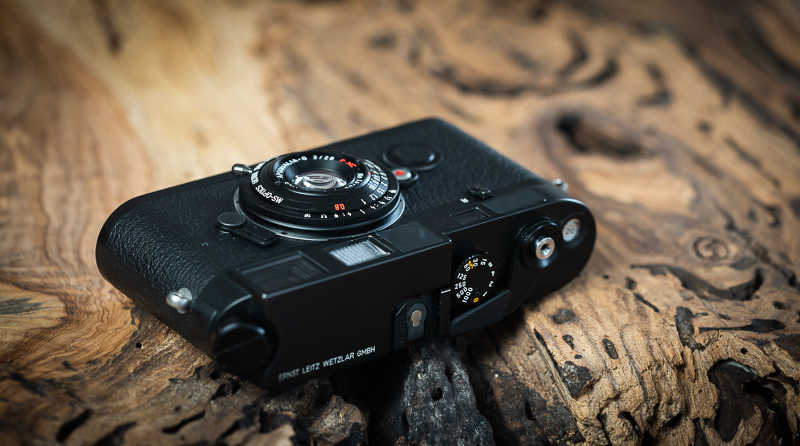
The MS-Optics 28mm 2.0 Apoqualia must be a bit of a fan favorite, as it has been rereleased – and the mechanical design improved – several times over the years, making it the first MS-Optics lens available in a Mark III version. I will be having a look how it all started though by reviewing a first generation Mark I version provided by a long-time reader.
Lens is being tested on 42mp Sony A7rII (UT) and 24mp Leica M10
Sample Images





You can find most of the sample images in full resolution here.
Contents
Disclosure
The MS-Optics 28mm 2.0 Apoqualia was kindly provided by our reader Christian for a review. He is also active under the name gladstone at digicamclub.de.
Specifications / Version History
There have already been three different versions of the MS-Optics 28mm 2.0 Apoqualia. They differ in terms of casing design and also minimum focus distance but share the same optics. Here I am reviewing a Mark I which has the following specifications:
-
- Diameter: 50mm
- Field of view: 74° (diagonally)
- Length: 9mm (without hood)
- Weight: 48g (measured, without hood)
- Number of Aperture Blades: 10 (rounded)
- Elements/Groups: 6/4
- Close Focusing Distance: 0.8 m
- Maximum Magnification: 1:27 (measured)
- Mount: Leica-M
You can sometimes find his lens on ebay.com (affiliate link) for around $1000, the MSRP in Japan is ¥90.000
Handling / Build Quality
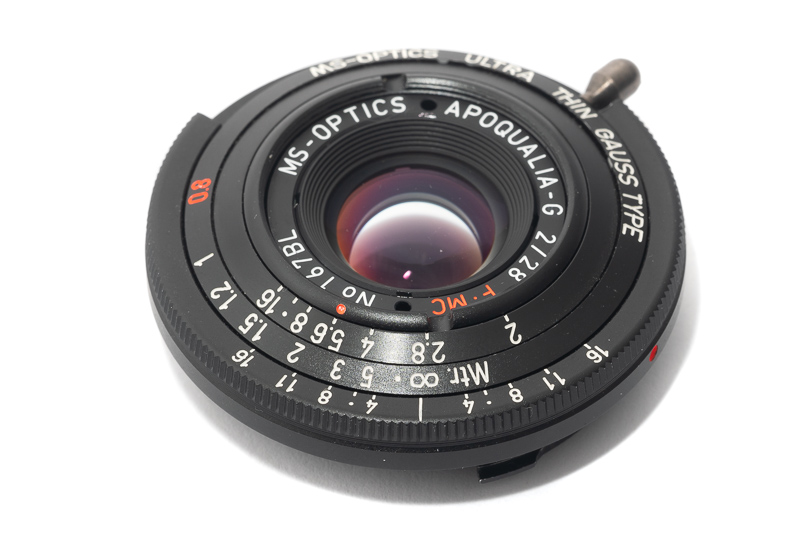
In terms of handling this lens is very similar to the MS-Optics 17mm 4.5 Perar I already reviewed.
On focusing the whole lens rotates and while I am usually not a big fan of focus tabs here the small lever comes in very handy. The lens rotates ~90° from the minimum focus distance (0.8m) to infinity. The lens is rangefinder coupled across the whole distance range.
Setting the desired aperture value is a fiddly endeavour, as only the small inner ring serves as aperture ring. The lens hood attaches directly to the aperture ring, so you can actually grab and use the hood to change the aperture value.
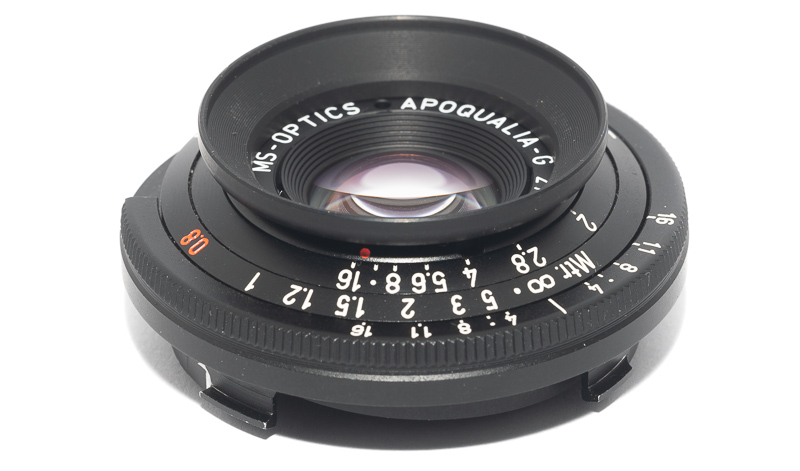
As is the case with every MS-Optics lens I have used so far (except for the 135mm 2.4 Aporis): on the Leica M10 the 6-bit-code-reader is not fully covered and therefore under bright light the camera will often think you changed the lens and throw you ouf of live view should you be using that. Adding a small piece of duct tape solves this issue.
I don’t think it is easily possible to attach filters to this lens as I don’t see a standard filter thread anyhwere and there is also no space to clamp a filter with the lens hood, as was the case with the MS-Optics 24mm 2.0 Aporia.
Speaking about the MS-Optics 24mm 2.0 Aporia, not only do they offer a similar focal length and the same maximum aperture, they are also similar in size. Personally I like the somewhat cleaner look of the 24mm’s casing more, but this is just my personal preference:

If you are wondering what the lens looks like on a Sony camera:
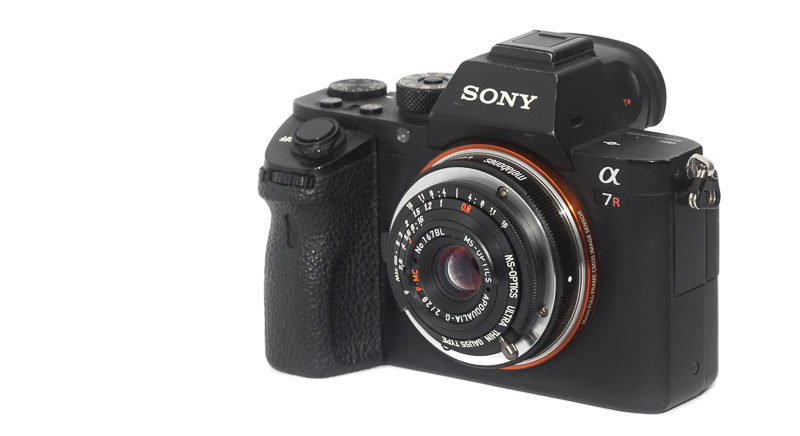
Vignetting
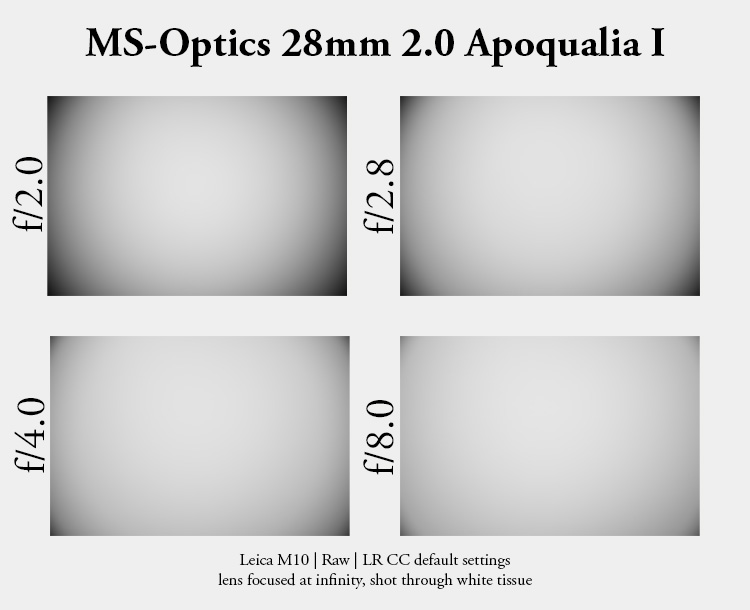
| f/2.0 | 4.1 EV |
| f/2.8 | 3.7 EV |
| f/4.0 | 2.7 EV |
| f/5.6 | 2.2 EV |
| f/8.0 | 1.9 EV |
| f/11 | 1.6 EV |
I guess it doesn’t come as a surprise that this lens has high vignetting figures. At the maximum aperture even a bit higher than the 24mm 2.0 Aporia but slightly less stopped down. The corners show a rather noticeable drop in exposure even stopped down as can be seen quite easily from these graphs:
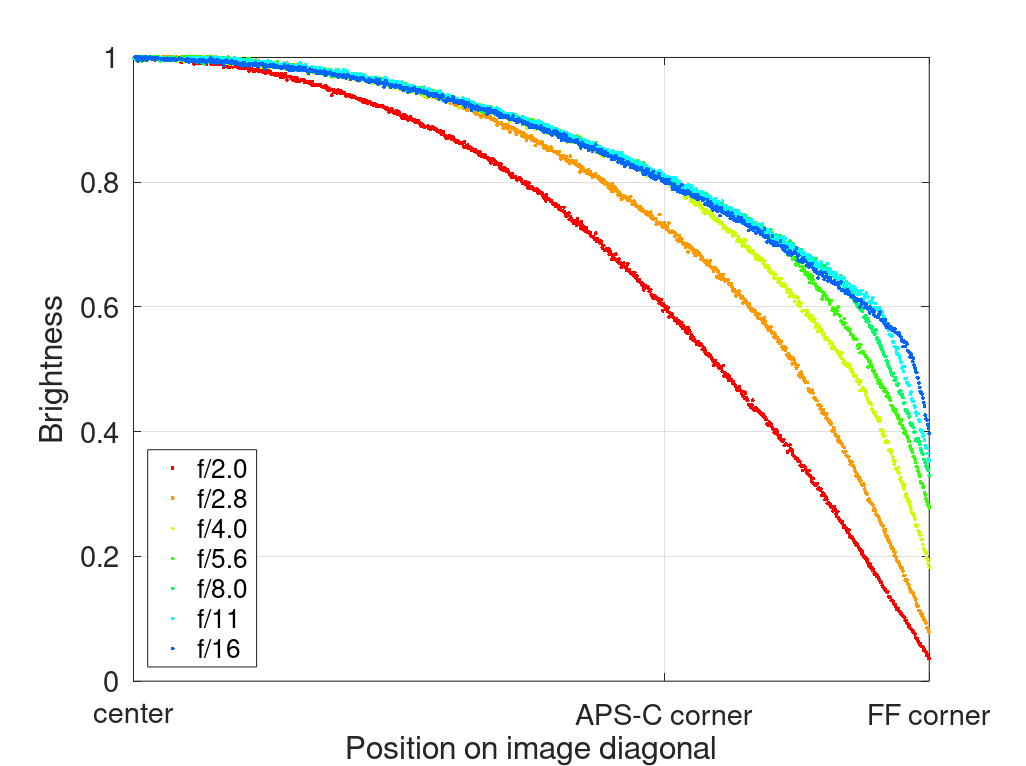
It is recommended to have a look at this article first to get an idea how this brightness graph works.
Sharpness
MTF-Graphs
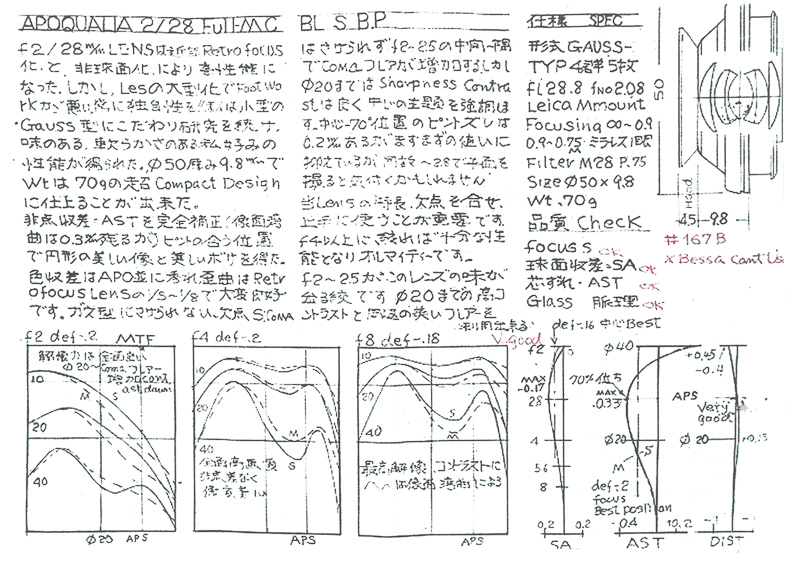
The MS-Optics lenses always come with hand-drawn MTF-graphs which do give an idea of what to expect.
What we see here is good contrast in the center at f/2.0 but a steady drop towards the corners. Stopped down to f/4.0 the field is a bit flatter which should lead to a more even across frame performance. There is a noticeable midzone dip shortly before the APS-C corners and the fullframe corners show significantly worse performance though.
Stopping down to f/8.0 helps a bit with the midzone dip and increases corner performance slightly.
As is usually the case for MS-Optics lenses astigmatism is well corrected going by the MTF graphs.
Compared to the MS-Optics 24mm 2.0 the corners look a bit worse, but let’s see how these graphs translate into reality.
Focus shift
90% crops, A7rII
Going by the MTF graphs I already had a feeling we might encounter some focus shift issues and indeed this is the case. Also similar to the MS-Optics 35mm 1.3 II Apoqualia contrast and resolution do not peak in the same focal plane. Stopping down from f/2.0 to f/2.8 or f/4.0 leads to a noticeable backfocus. It looks pretty strong, so this might actually be a problem when relying on the rangefinder to focus and shooting in the f/2.8 to f/4.0 range.
On digital I did usually use liveview with this lens for more precise focusing and when using liveview and stopping down before focusing (which you have to do anyway because of the mechanical construction) this will not be an issue at all.
infinity (42mp Sony A7rII, 24mp Leica M10)
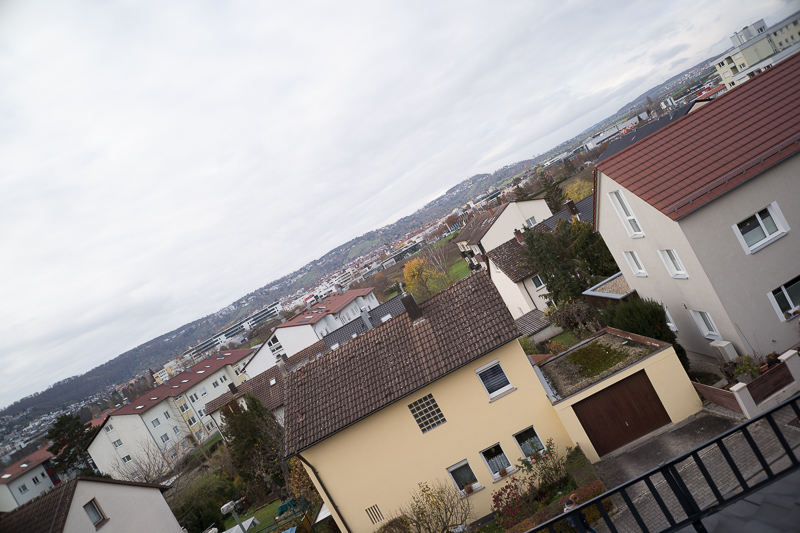
As the MS-Optics 28mm 2.0 has wild focus shift I had to refocus for every picture here.
Field curvature is another issue. It is so strong, the corners can actually look decent at f/2.0, but the lens needs to be focused much closer for that, which will throw the center out of focus again.
For somewhat even across frame performance this lens needs to be stopped down to at least f/11, better f/16 and the corners still leave something to be desired.
The MS-Optics 24mm 2.0 is a better performer here, as it shows even across frame performance already at f/8.0 (at least on a camera with a thin filter stack like the M10) and its field curvature is simply lower.
Using this lens on a rangefinder camera without liveview is not something I can recommend though, as it might become a frustrating experience.
portrait distance (0.9 m, 24mp Leica M10, 24mp Sony A7III)
For portraiture it isn’t so important how flat the field is, it is more interesting to see what the sharpness is like when focused at different parts of the frame to take field curvature (and also focus shift) out of the equation, especially when dealing with lenses with a high amount of field curvature.

This is what I did here, I refocused for every shot and aperture to get the best possible result at different locations in the frame (center, inner midframe and outer midframe).
Focus distance was roughly 0.9 m and the circle of the dollar bill is more or less the size of a human eye.
Sony A7III <—> Leica M10
As is the case for most MS-Optics lenses I have used so far thanks to the well corrected astigmatism the lens shows a very usable performance here, even off center.
It also seems the performance is a bit better on a camera with a thin filter stack like the Leica M10.
Flare resistance
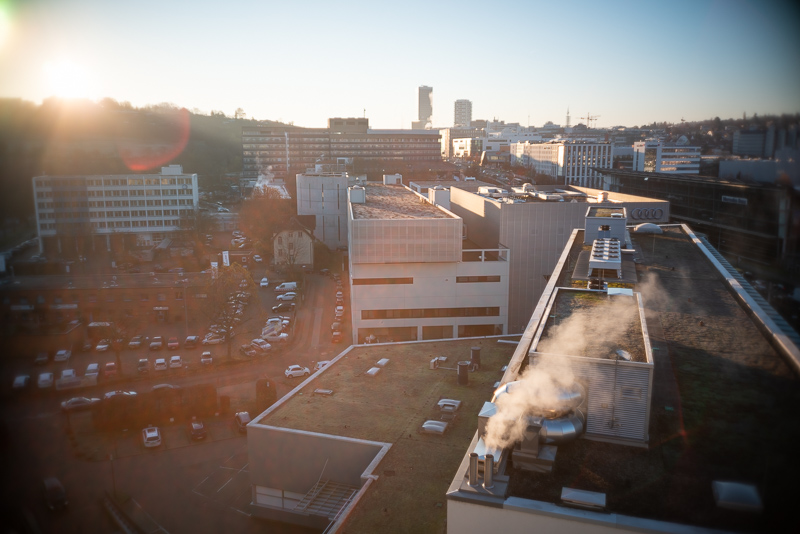
It is typical for MS-Optics lenses that all elements are multicoated. Coating is only one variable when it comes to the lens’ actual performance in this category though. I was also using the tiny hood for all of the pictures you see in this review, but it doesn’t do much in terms of flare resistance.
At maximum aperture, as can be seen from the picture above, very big ghosts and veiling flare can appear.
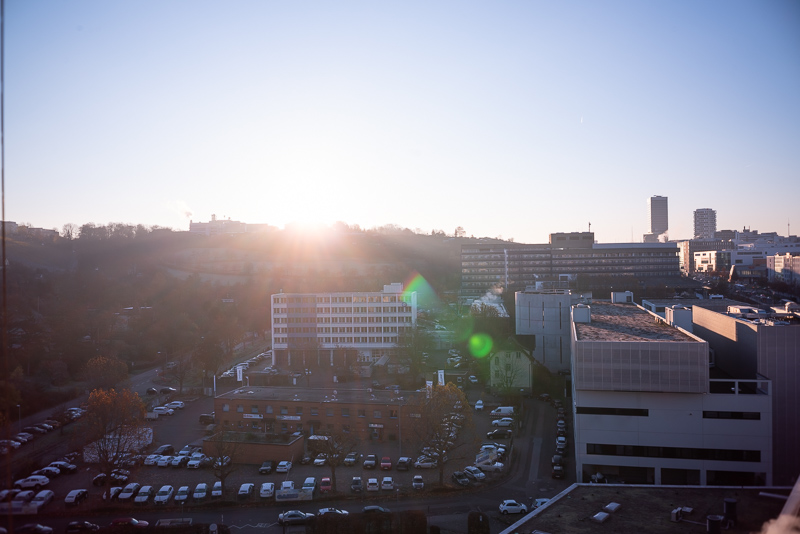
Stopped down the bigger artefacts mostly disappear, but instead a few smaller ghosts may appear.
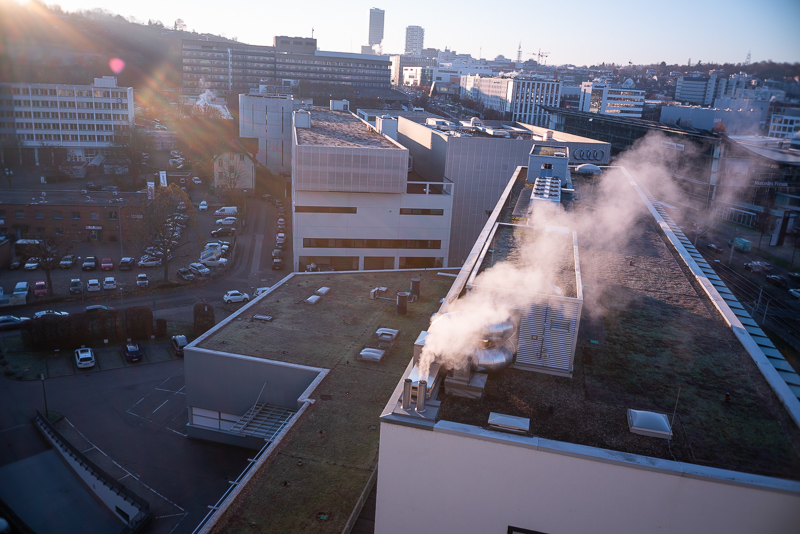
As with most lenses with a strong light source close to the corner of the frame very obstrusive artefacts can appear, but this is easily avoided by slightly reframing.
Some of the MS-Optics lenses fared really bad in this category, e.g. the 35mm 1.3 II, but this 28mm is one of the better ones.
Coma
100% crops from extreme corner, Leica M10, focus on center
This category hasn’t exactly been a staple of MS-Optics lenses. There is definitely strong coma at f/2.0 and f/2.8 but the main issue here is field curvature. It takes stopping down to f/11 for the corners to be in roughly the same focal plane as the center of the frame.
When there are no point light sources close to the borders and corners the situation isn’t as bad as it looks from the aperture series above though:
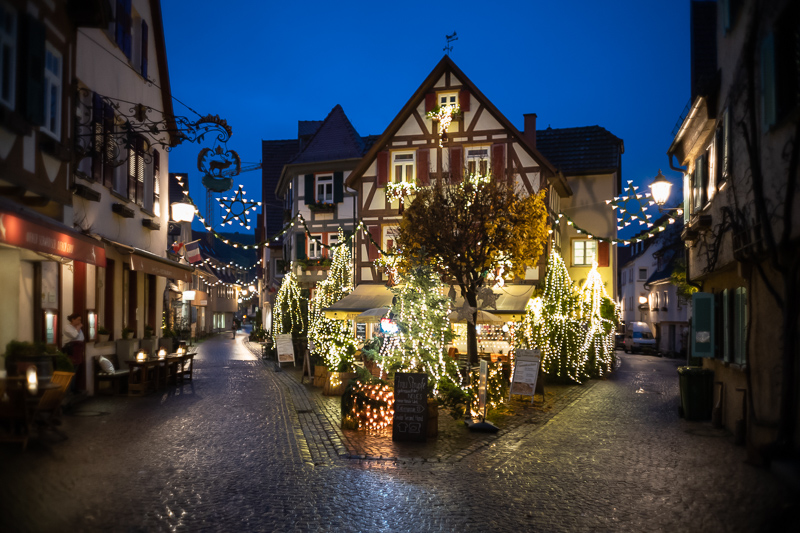
Distortion
Distortion is low but slightly wavy. I think when dialing in +5 it looks a bit better.
Sunstars
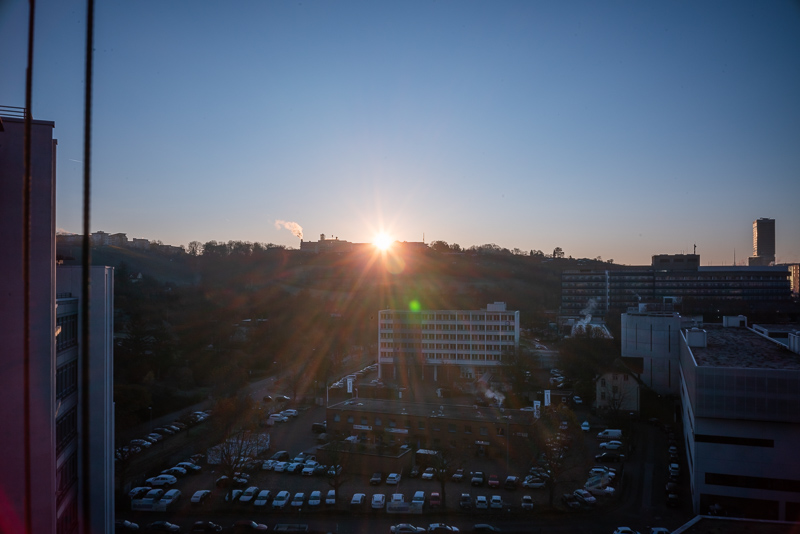
The MS-Optics 28mm 2.0 is using 10 rounded aperture blades and it is very rare to encounter sunstars at all.
If you want to learn more about this topic have a look at this article.
Bokeh

In many of the sections we already talked about the high field curvature and it will also be a big topic here. The MS-Optics 35mm 1.3 II Slim had very odd bokeh thanks to its high field curvature and the dreadful Zenitar 50mm 0.95 E was another such candidate.



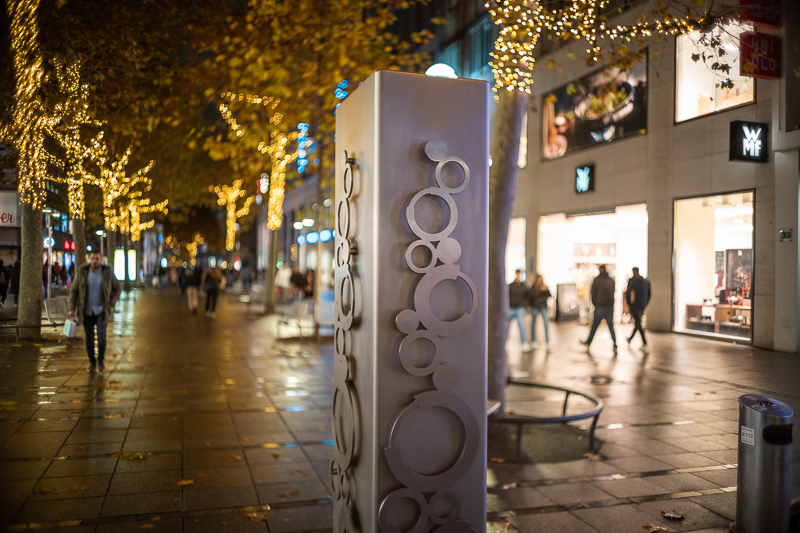
In all the pictures above the massive field curvature is obvious as the border regions in the background are in focus even though I focused on something much closer in the center. If you are a regular reader you may already know I am not a fan of this, it looks just wrong and distracting to me. If you don’t know what I am talking about you can also have a look at my article Bokeh explained for more detailed explanations.
When focusing on something closer this is usually masked by the generally higher amount of subject separation, unfortunately this lens’ minimum focus distance is 0.8 m, so on the Leica cameras it isn’t easily possible to get closer. Instead I used one of my Sony E-mount cameras with a close focus adapter for the following pictures, at these distances the field curvature isn’t that obvious (or distracting):


Chromatic Aberrations
lateral
Lateral CA are so well corrected, I didn’t find any in my pictures. Neither when shooting foliage against the sun nor shooting cityscapes with white window frames close to the borders.
longitudinal
One area many (but not all) of the MS-Optics lenses pleasantly surprised me is the correction of longitudinal CA. Is this also the case here?
There is a bit of green outlining visible in the out of focus areas, but this is still a good performance, just not as good as some of the other MS-Optics lenses with an “Apo” in their name.
When it comes to purple fringing the performance is remarkable though, there are hardly any traces of outlining visible.
Conclusion
These MS-Optics lenses are a bit like a box of chocolates: you can never be really sure what to expect. This is also what makes them worthwhile to review. They are not like the latest Sony GM lenses where everyone already knows before release how great they are.
But back to this MS-Optics 28mm 2.0 Apoqualia Mk I. I was expecting this lens to perform similar to the 24mm 2.0 Aporia, but surprisingly this isn’t the case. Unfortunately it was a bit of a negative surprise to me.
These field curvature patterns where the focal plane bends far to the back towards the borders and corners is simply not something that leads to pictures I find aesthetically pleasing. It is (one of the many) reasons I also didn’t like the MS-Optics 35mm 1.3 II Slim, the 50mm 1.1 Sonnetar or the Zenitar 50mm 0.9 E. But this is just me. There are people out there that spend thousands of dollars on a Leica Noctilux 50mm 1.0, which does the same thing, so there must be some draw to it that only I fail to see.
Also similar to the 35mm 1.3 II Slim the field curvature cannot really be tamed enough by stopping the lens down. I often pack the 24mm 2.0 as a just-in-case 24mm lens for occasional stoppend down landscape/architecture shooting, but I wouldn’t do that with this 28mm lens.
Like the 50mm 1.1 Sonnetar I think the 28mm 2.0 Apoqualia is one of Miyazaki’s most famous lenses, just happens I am not a fan of either of those. But then I don’t write reviews to convice you to buy the lenses I like (or even worse: those where I get the highest commission). I tell you about their characteristics and then it is always up to you, to make up your mind.
You can sometimes find his lens on ebay.com (affiliate link) for around $1000, the MSRP in Japan is ¥90.000
Alternatives
Voigtlander VM 28mm 2.0 Ultron MKII:
The best balanced 28mm lens for M-mount in my opinion. It isn’t nearly as small as the MS-Optics lens being reviewed here, but it is still small while packing a whole lot of optical performance.
buy from B&H | ebay.com | ebay.de (affiliate links) for $899
Voigtlander VM 28mm 2.8 Color-Skopar:
This slower Voigtländer lens still isn’t as small (and quirky) as the MS-Optics lens reviewed here, but it offers great image quality and handling in a still very compact package.
buy from ebay.com | B&H (affiliate links) for $699
7Artisans 28mm 1.4:
One stop faster and a good performer, especially so taking into account its low pricepoint. Disadvantages are a minimum focus distance of 0.7 m, only average flare resistance and unappealing sunstars. Still my favorite 7Artisans lens.
buy from B&H, amazon.com/amazon.de ebay.com/ebay.de for about $436 (affiliate links)
MS-Optics 24mm 2.0 Aporia:
Generally a 24mm 2.0 should be harder to design than a 28mm 2.0, so all else equal one should expect worse performance from the 24mm lens, but here I think it is the better lens. The Aporia has less issues with field curvature leading to much nicer (in my eyes) bokeh and more even sharpness stopped down.
buy from ebay.com for ~$1200 (affiliate link)
Leica 28mm M-mount lenses:
Leica offers a 28mm 2.8 Elmarit ($2600), 28mm 2.0 Summicron ($5100) and 28mm 1.4 Summilux ($7800). Due to their prohibitive pricing I have no personal experience with any of them.
buy from B&H (affiliate link)
Further Sample Images





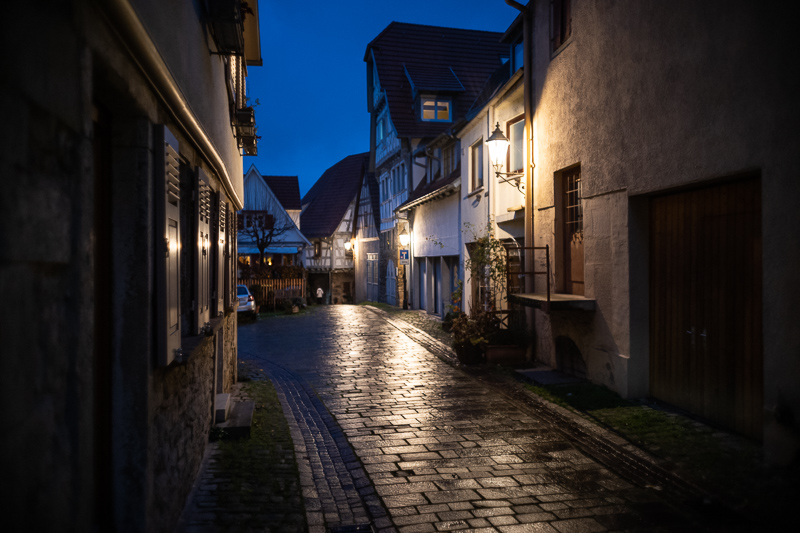

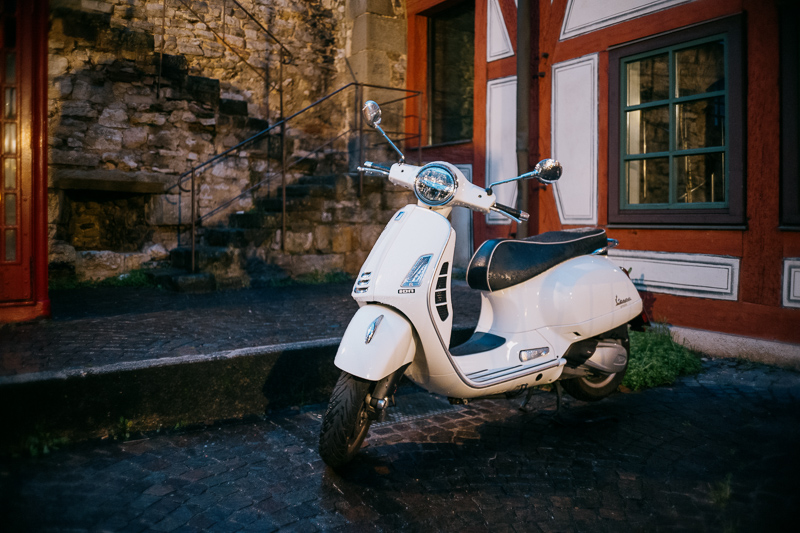



You can find most of the sample images in full resolution here.
Further Reading
- All M-mount lens Reviews
- Guide to the best 85-135mm Portrait Lenses for Sony a7 series
- Review: Sigma 35mm 1.2 Art DG DN
- Review: Sony FE 24mm 1.4 GM
Support Us
Did you find this article useful or just liked reading it? Treat us to a coffee!
![]()
![]()
![]() via Paypal
via Paypal
This site contains affiliate links. If you make a purchase using any of the links marked as affiliate links, I may receive a small commission at no additional cost to you. This helps support the creation of future content.
Latest posts by BastianK (see all)
- 2025 – Year in Review - December 23, 2025
- Review: Sony FE 70-200mm 4.0 G Macro OSS II - December 20, 2025
- Review: Viltrox AF 35mm 1.2 FE LAB - December 17, 2025


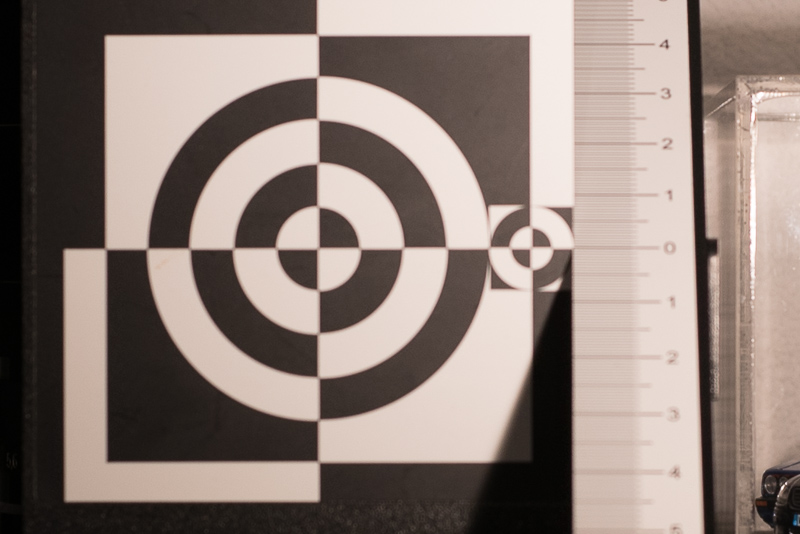


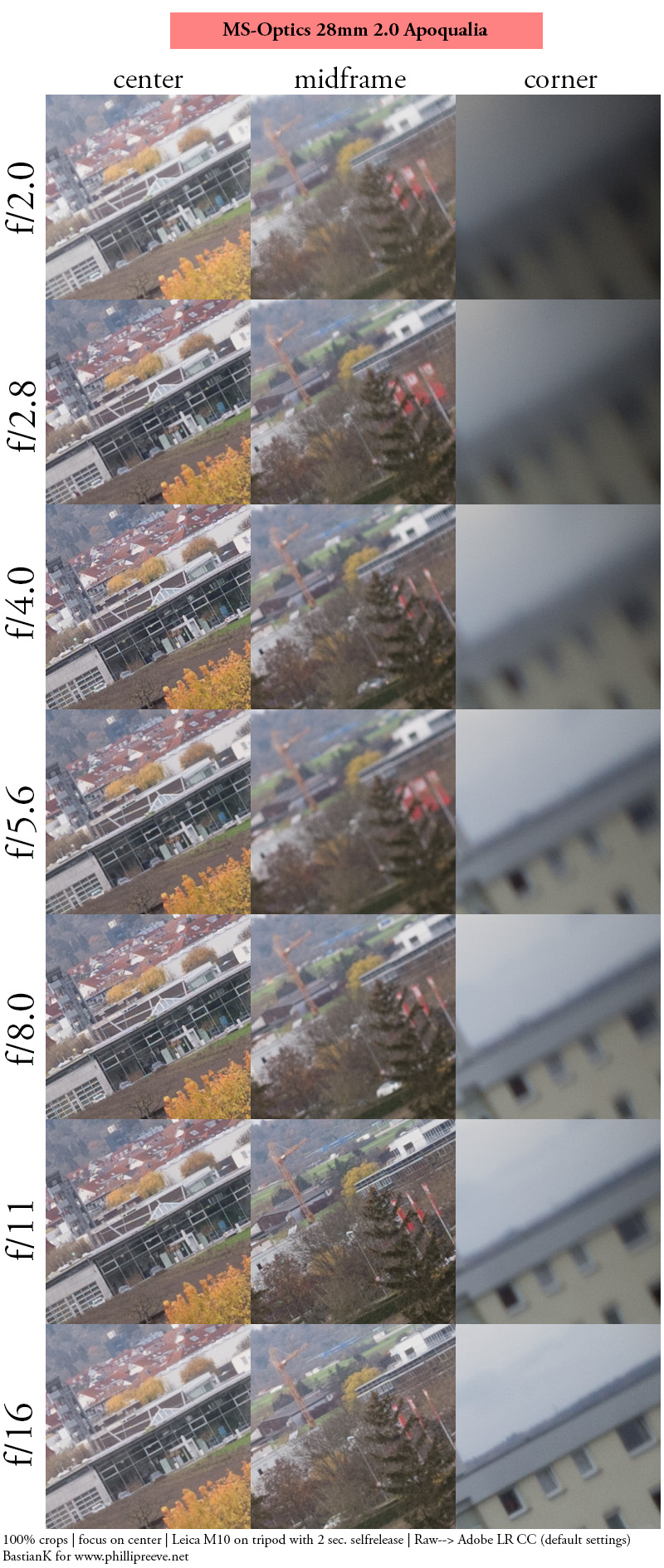







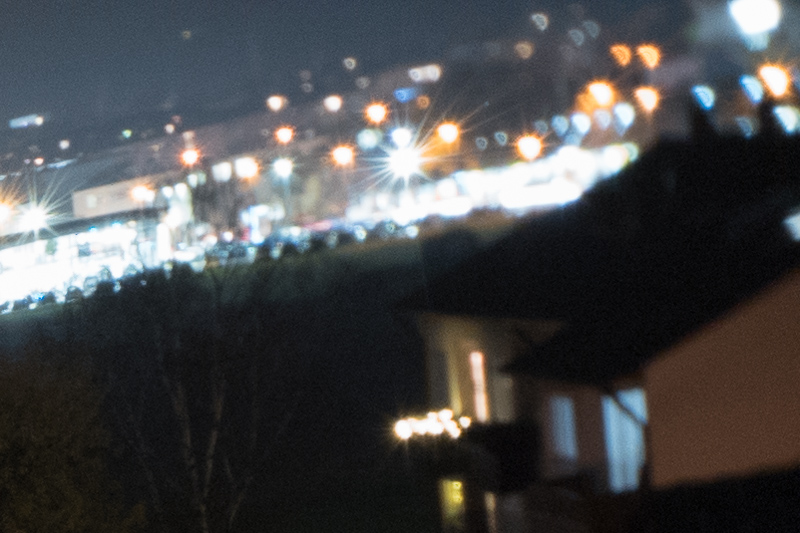
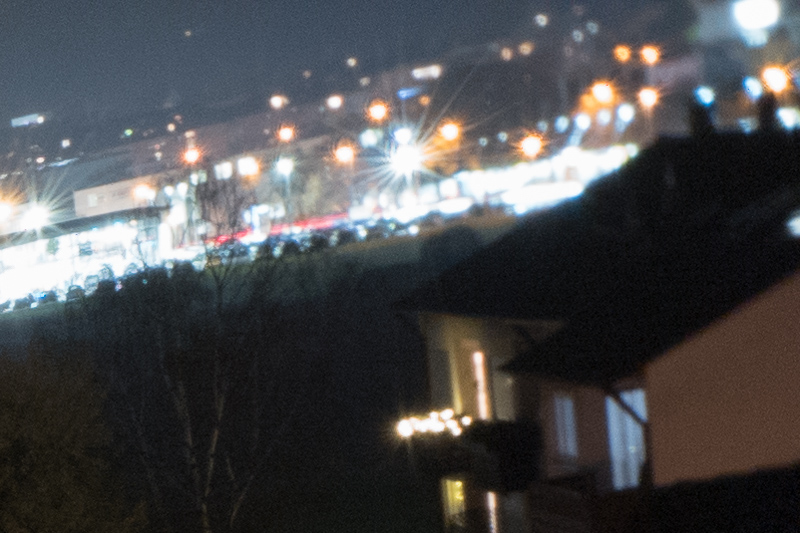
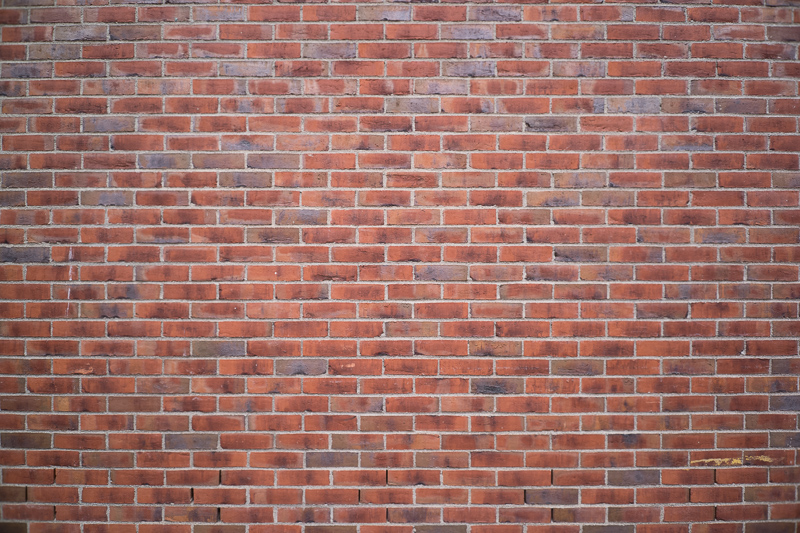
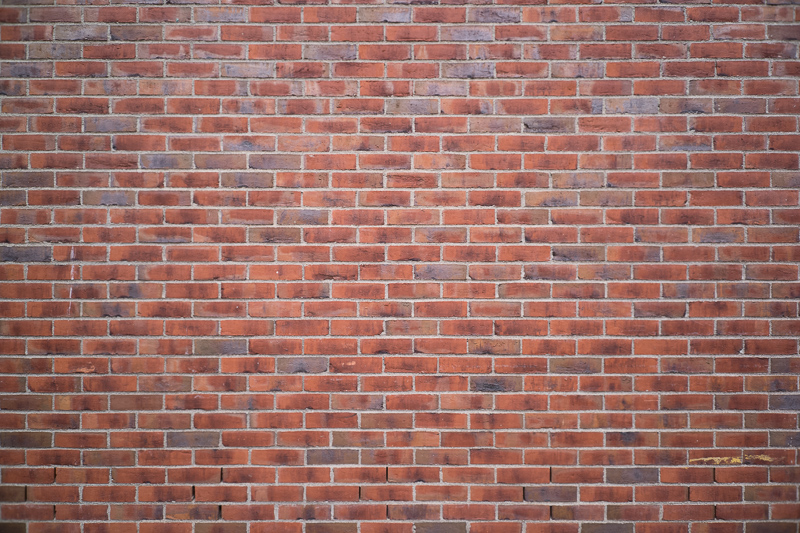


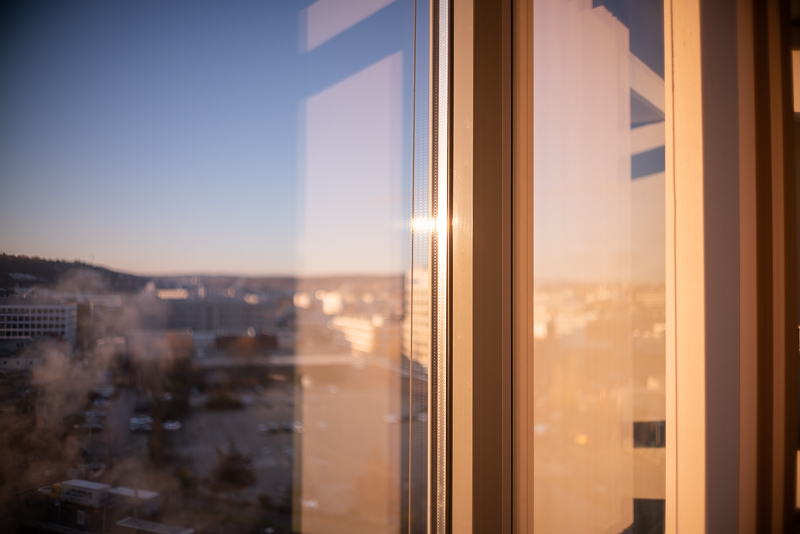
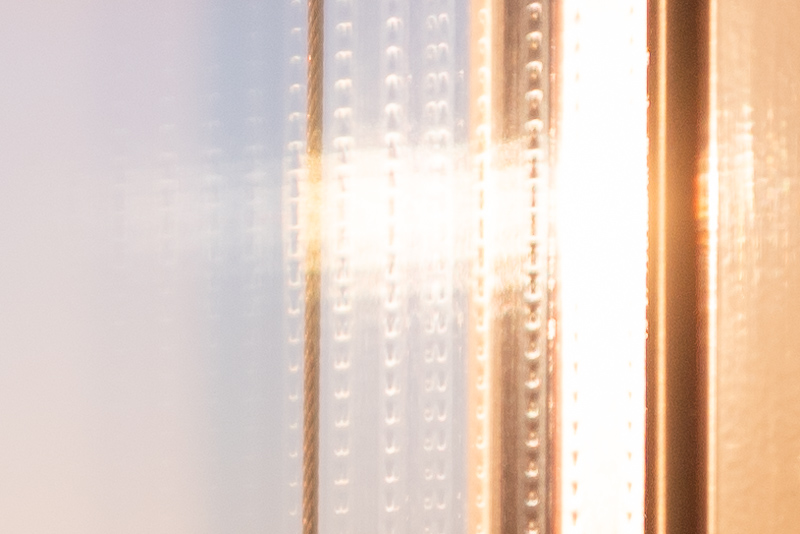
Hi Bastian,
I always struggled with the huge amount of field curvature. But seeing your beautyful pictures I sure will use this lens more often in the future…
It sounds so easy putting the the main target in the middle and watch the the sharp areas stretching more and more away towards the edges, but you did it and gave me inspiration.
Was I nuts buying this lens? Yes, I think so, but how boring would life be else…?
Thank you for that review, your wonderful pics and showing us lenses, that are far from beeing perfect.
Best regards, Christian
I also struggled, believe me 🙂
I still have 4 MS-Optics lenses I use regularly, so you are not alone.
Thanks for this review. I’ve used this lens for a few years on Sony fullframe and APS-C so focus shift was never a consideration for me (the field curvature is an issue, of course). But I will shortly receive a Leica film camera and didn’t realize the focus shift on this lens was so extreme. It sounds like I should either plan to shoot this lens only wide open or stop it down beyond f4 if I hope to get accurate focus with the rangefinder?
My advice: try to find someone with a digital rangefinder camera equipped with liveview and figure out for what aperture the rangefinder coupling is best calibrated first.
Thanks, that makes sense.
for me the link for the review of the 7 artisans is taking me to the voigtlander
Fixed, thanks!
It seems Myazaki likes this lens so much and just launched 4th iteration of 28mm.
https://www.japancamerahunter.com/product/ms-optics-apoqualia-28mm-1-7-mc/
Myazaki knows 28mm is the most versatile focal length for Fullframe 😂